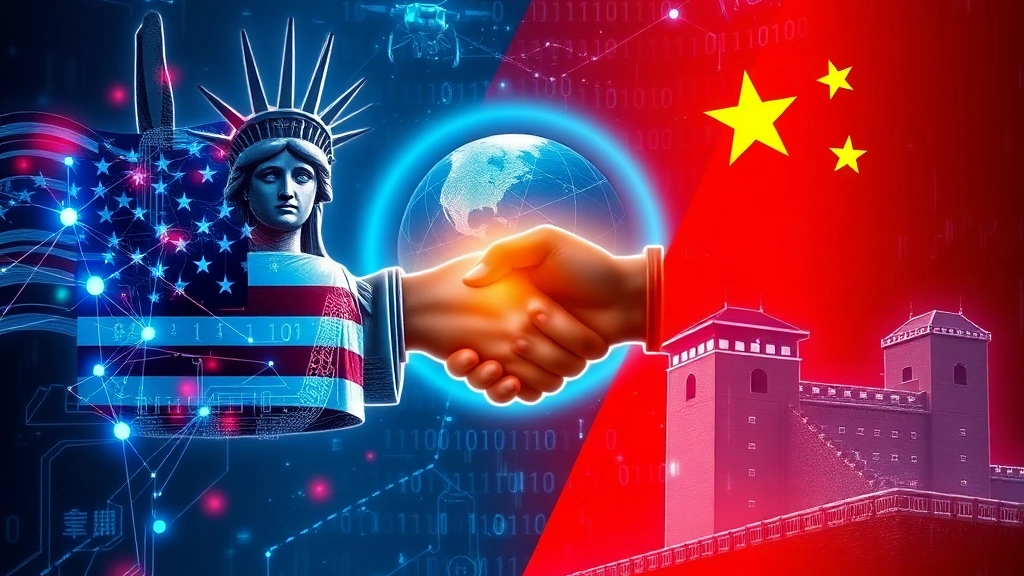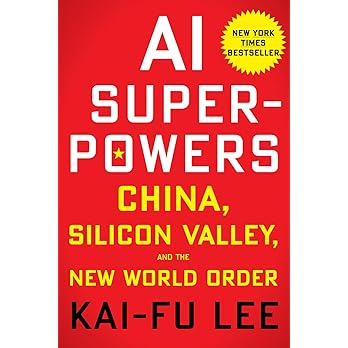 The
AI Race
The
AI Race
The two most powerful nations on the planet are engaged in a race towards AI dominance. The AI race between China and the United States is one of the defining geopolitical and technological contests of our time. Each country has different strengths, weaknesses, strategies, challenges, and risks. As we've seen in recent years, the rewards are enormous.
Learn more about where things stand, respective strengths and weaknesses, and where we are headed.

The U. S. tends to define the AI Race in terms of the race toward Artificial General Intelligence (AGI); that is, self-improving artificial intelligence which surpasses the cognitive power of human beings and is capable of executing real-world knowledge work tasks. By one estimate, China is not years behind the U.S. in AI. Maybe they are three to six months behind, but no one can really be certain what that means, whether that's true, and whether it really matters.
Current State of the AI Race
🧠 Basic Research and Foundational Models
The U.S. leads in highest-impact research, top-cited papers, and foundational model development.
China produces a very high volume of publications and patents, and is catching up quickly in basic research and open-source models.
📱 Application and Deployment
With deep pockets of private investment, the U.S. is strong in consumer AI, large software models, enterprise SaaS, tools like ChatGPT, and cloud platforms such as Azure, AWS, and Google.
China is excellent in deploying AI in manufacturing, industrial automation, AI as applied to industry and government, smart cities, and public services. Because of centralized planning and large datapools, China can roll out large-scale deployments rapidly whereas the U.S. is often bogged down in federal government policy and appropriations.
Consider the threat of DeepSeek, whose introduction caused Wall Street to lose a trillion dollars in a day. The release of China's DeepSeek R1 in 2025 significantly reduced the gap with the U.S. as measured by the AI Index Report.
🧰 Hardware and Infrastructure
U.S. leads in many cutting-edge chips, supercomputing, private cloud infrastructure, but export restrictions are affecting availability. Big investment in data centers, and infrastructure.
China is pushing for self-sufficiency by growing its own chip manufacturing, investing in domestic hardware, and reducing reliance on U.S. chips. China is also scaling up data centers. China operates roughly 2 million industrial robots and installed about 295,000 more in 2024 alone--more than the rest of the world combined--with a majority made domestically in China.
⚖️ Regulation and Policy
The U.S. has more debate and variation such as efforts to balance oversight (ethics, safety, privacy) with innovation. Export controls, funding of research, AI safety norms are growing concerns.
China has strong top-down guiding strategy: national AI plans, regulatory frameworks that emphasize alignment with state goals, self-reliance (especially in hardware), industrial policy and state procurement support.
👩💻 Talent and Human Resources
The U.S. has many leading AI companies and universities with deep talent in computer science, AI labs, and high quality PhDs. There is also large private capital funding and federal government incentives.
China has huge STEM output with many engineers, increasing retention and improvements in academic quality. Also, there are strong incentives for researchers and state support for education and R&D.
 Key Challenges
Key Challenges
United States
- Export controls and supply chain dependencies (e.g. for advanced chips).
- Regulatory uncertainty; debates over AI safety, ethics, regulation may slow deployment.
- Energy costs, infrastructure deployment bottlenecks.
- Inequality of adoption: some industries lag, smaller players may not have resources.
China
- Dependence on some foreign technology (especially high-end lithography, chip components).
- Risks of overregulation or political interference, which may stifle innovation.
- Ethical, privacy, and transparency concerns (both internally and how others view products made under certain policies).
- Scaling quality: while quantity of publications/patents is large, effect and originality still sometimes lag.
 AI Superpowers: China, Silicon Valley, and the New World Order
AI Superpowers: China, Silicon Valley, and the New World OrderMore AI Books...
 Recent Trends and Signals
Recent Trends and Signals
- U.S. officials claim that China is 3 to 6 months behind in certain model capabilities.
- China is cracking down on the dependence on U.S. AI chips with customs enforcement and import controls and by pushing domestic chip production.
- Both sides are increasing their investment in AI. U.S. companies like Microsoft, Amazon, and Oracle are investing heavily in data centers. China is allocating state funds and aligning its industrial strategy towards AI.
 What Might Decide the Winner
What Might Decide the Winner
Here are some key factors that may determine who gains a longer-term advantage, although winning the race is more about influence, sustainability, and being ahead in certain domains such as AI model development.
Supply Chain and Self-Reliance
The ability to make their own chips, components, hardware,
and avoiding chokepoints is paramount. Nvidia leads the way worldwide, but
China has poured massive capital into semiconductor self-reliance. Funds at
national and regional levels support chip design, manufacturing, packaging,
test, and R&D.
Energy, Infrastructure, and Scaling Cost
AI works only if you can run
the compute affordably and reliably. In the U.S., energy demand from data
centers is anticipated to rise steeply, while China is projected to grow
even faster (percentage-wise) due to both expansion and efforts to improve
efficiency from a lower baseline.
Talent and
Research Base
Who can attract, keep, and grow cutting edge research teams
and know-how.
Deployment and Real-World Impact
How well can AI be
embedded into industry, public services, healthcare, smart cities, etc.
Breadth of adoption may matter more than raw model power.
International Alliances and Influence
This involves exporting software, setting
standards, and participating in open source or international regulation.
Access to Data
China has more internet users than the US and Europe combined. If
data is the fuel of the AI revolution, China simply has more of it than
anybody else.
Regulation and Ethics
This includes
trust, safety, alignment, and global standards. Poor governance could lead
to a backlash or regulation that slows things down.
 Links
Links
AI in America chapter on The Race to Global Supremacy in AI.
Links to more resources about the AI Race. External links open in a new tab.
- cfr.org/article/china-united-states-and-ai-race
- brookings.edu/articles/how-will-ai-influence-us-china-relations-in-the-next-5-years/
- finance.yahoo.com/news/china-narrows-ai-development-gap-093000729
- cnbc.com/2025/10/08/nvidia-huang-ai-race-china-us-trump
- washingtonpost.com/technology/2025/10/13/china-us-open-source-ai/
- brookings.edu/articles/succeeding-in-the-ai-competition-with-china-a-strategy-for-action/
- atlanticcouncil.org/blogs/new-atlanticist/reading-between-the-lines-of-the-dueling-us-and-chinese-ai-action-plans/
- ncuscr.org/podcast/us-china-ai-race/
- visualcapitalist.com/visualizing-u-s-vs-chinese-ai-model-performance/